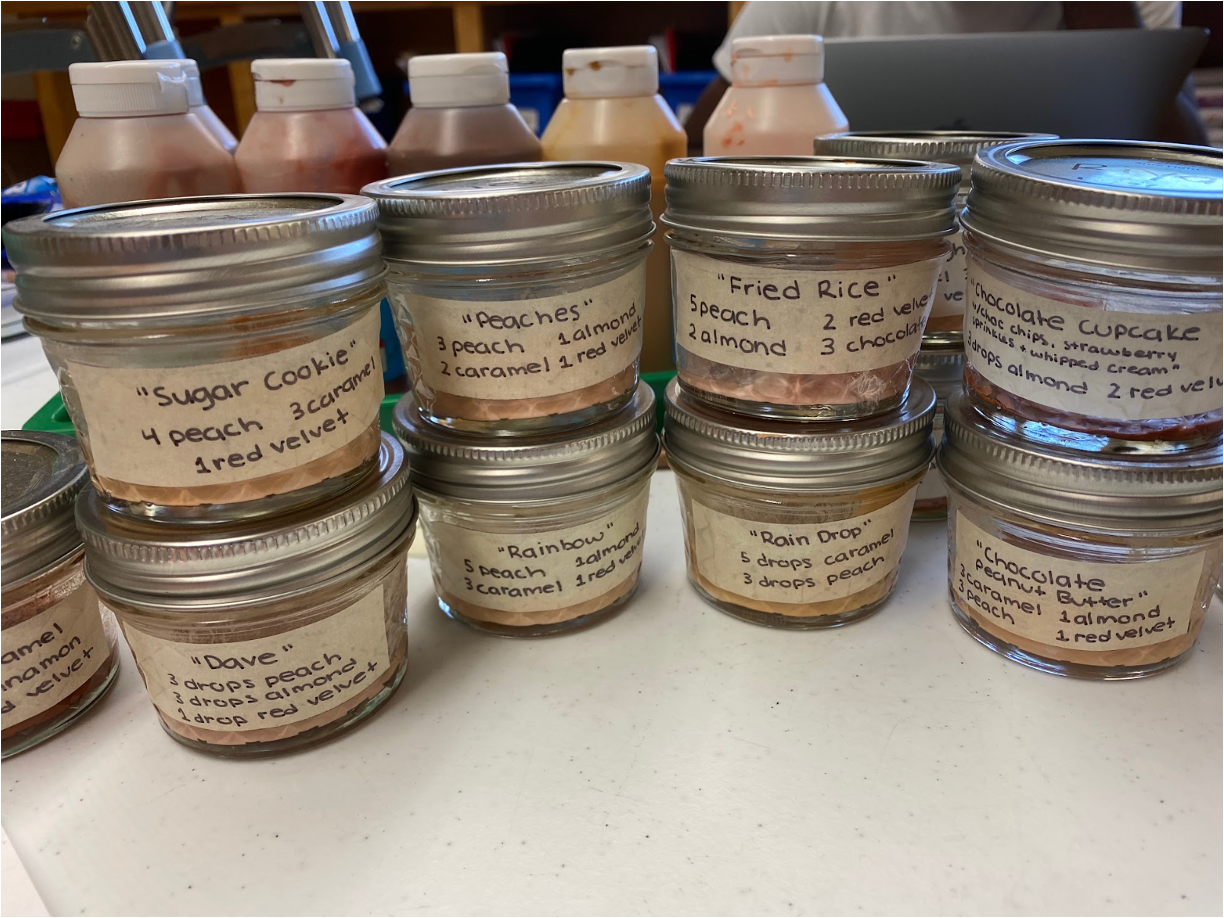“I think it’s [changing color] because it’s warm.” Junior Kindergarten scientists and social thinkers this week explored skin tones, bodies, and slime, noticing and sharing their observations, and using these to develop questions and invent stories. In the garden, they made slime from four ingredients, following a recipe together and using various tools to measure and mix. “I remember what [the ingredient] looked like. But not what it’s called. It looked clean, but it wasn’t water.”
It looked clean, but it wasn’t water.
Playing with the slime throughout the week, they noticed things like how it can form bubbles, how it dries out when you leave a thin layer on the bin, and how the color changes when you play with a small piece for a long time. They noted some slime had gone missing and generated ideas about what might have happened:
“Maybe kindergarten didn’t have any and they wanted some to look at.”
Or, “maybe it went to meet Bear-Bear!” (Bear Bear is in South Korea this week with a classmate and this idea of the slime also traveling sparked many other ideas and also wonderings like, “Maybe Bear-Bear comes alive when no one is looking, like in my backpack!”)
In their read-alouds this week, students are exploring differences in skin tone and body. They read Bodies Are Cool (Tyler Feder), and Our Skin: A First Conversation About Race (Megan Madison and Jessica Ralli). They each worked with a teacher to mix paints for their own skin tone, writing the ingredients and naming their own skin tone’s color. Next up, they will draw and share something they love about their unique body. Junior kindergarten builds broad exposure to the myriad wonders of our physical and social worlds, and reinforces confidence, sense of self and appreciation for others.

